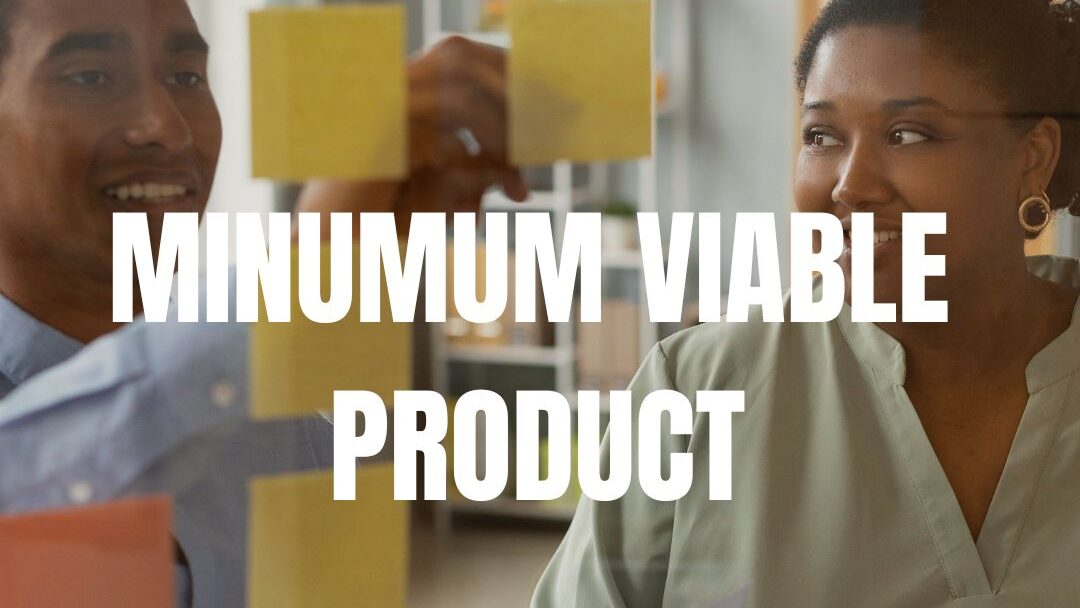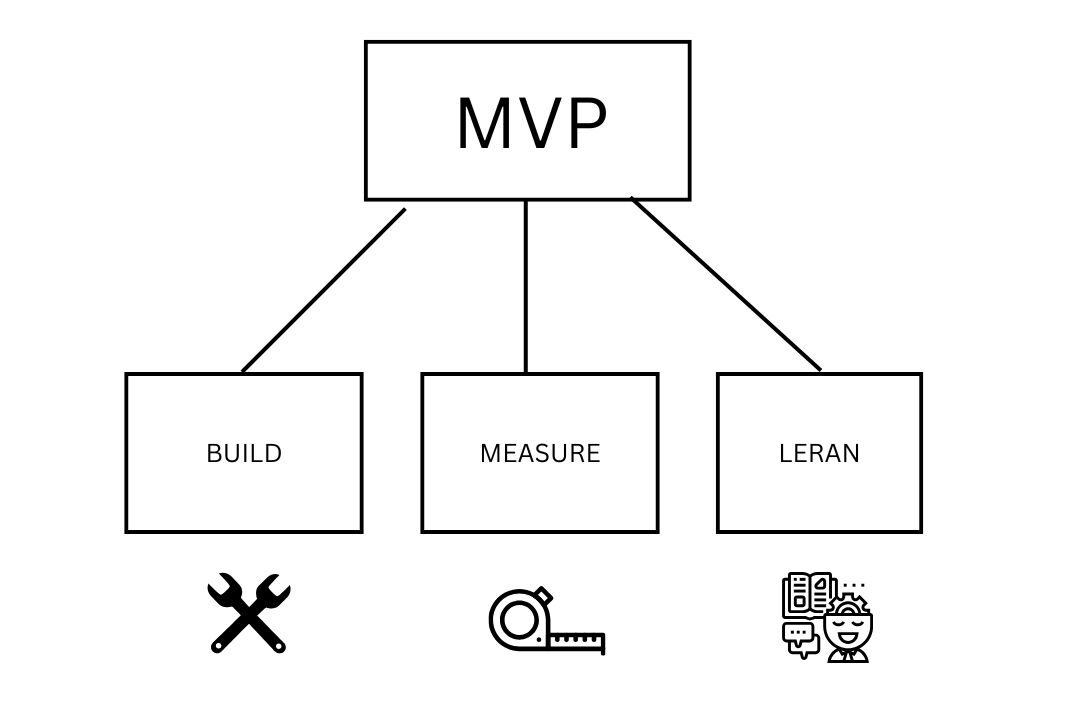In the fast-paced world of startups, the concept of a Minimum Viable Product (MVP) has become a cornerstone of product development. Rather than spending months or years building a fully-featured product, successful entrepreneurs focus on launching a simplified version that tests their core business hypothesis. This approach minimizes risk, accelerates learning, and ensures that product development is guided by real user feedback rather than assumptions.
This guide will explore:
- The definition and importance of a Minimum Viable Product
- Understanding the fundamentals and value of an MVP
- The core benefits of adopting an MVP approach
- How to measure its success
- When and how to pivot based on feedback
By the end of this post, you’ll have a clear roadmap for developing an MVP that validates your idea while conserving resources.
What Is an MVP?

An MVP (Minimum Viable Product) is the simplest version of a product, containing only the key features necessary to address a primary user need. Eric Ries introduced this concept in The Lean Startup, describing it as:
“The earliest iteration of a product that enables a team to gain the most customer insights with minimal development effort.”
Or, alternatively:
A Minimum Viable Product (MVP) is a stripped-down version of a product, focusing solely on core functionalities to meet early users’ main pain points. As Eric Ries explains in The Lean Startup, an MVP is:
“The most basic product release that helps teams validate assumptions and learn from real users while investing the least resources.”
An MVP is not a half-baked or low-quality product—it’s a strategic approach to testing a business idea before committing significant time and money.
Key Characteristics of an MVP:
- Focuses on a single core value proposition (not multiple features)
- Built quickly and cost-effectively (avoids over-engineering)
- Designed for learning (gathers real user data, not just assumptions)
- Scalable foundation (can evolve based on feedback)
Examples of Successful MVPs:
- Dropbox started with a simple video demo to validate demand before building their file-sharing product.
-Here are a few paraphrased versions of your Airbnb MVP example: - Airbnb started as a simple website listing air mattresses for rent in a San Francisco living room. In its early days, Airbnb was just a minimal site connecting travelers with spare air mattresses in one apartment. The first version of Airbnb was a no-frills web page offering short-term stays on air mattresses. Airbnb’s MVP consisted of a basic online platform renting out floor space with air mattresses.
- Zappos began by manually fulfilling shoe orders from local stores to test if people would buy shoes online.
These companies avoided building complex products upfront and instead validated demand with a simple MVP.
Why Build an MVP?
Many startups fail because they build products based on assumptions rather than real market needs. An MVP reduces risk by:
1. Reducing Financial Risk
- Instead of investing $100K+ in a full product, an MVP can be built for a fraction of the cost.
- If the idea fails, losses are minimized.
2. Accelerating Time to Market
- A basic version can be launched in weeks instead of months.
- User feedback in the early stages accelerates product improvement.
3. Validating Demand Before Scaling
- Concepts often appear promising in theory but fall short in practice.”
- An MVP validates if users will actually purchase the product.
4. Attracting Investors with Real Data
- Investors prefer seeing traction (real users, feedback, early revenue) over just a pitch deck.
- An MVP provides concrete evidence of market potential.
5. Avoiding Feature Bloat
- Many startups waste time building unnecessary features.
- An MVP forces focus on what truly matters to users.
Conduct Industry Analysis in Seconds – For Free!
Discover how QuantexFlow can help you quickly analyze any industry with powerful AI-driven insights. Perfect for entrepreneurs, investors, and business analysts.
Try It Now – FreeNo credit card required. Get instant access to industry insights.
The 9 Key Benefits of Building an MVP (Explained in Detail)
1. Early Market Validation
One of the most significant advantages of an MVP is that it allows you to validate your business idea with real users before making substantial investments. Rather than relying on surveys or hypothetical scenarios, you get concrete evidence of whether customers actually need and want your solution. This validation comes from observing how users interact with your product, what features they engage with most, and whether they’re willing to pay for it. Many startups fail because they build products based on assumptions rather than real market needs – an MVP helps you avoid this costly mistake by testing the waters first.
2. Reduced Development Costs
Developing a full-featured product requires significant financial resources. An MVP approach dramatically lowers these costs by focusing only on essential features. Instead of spending months (or years) and hundreds of thousands of dollars building something that might fail, you can test your concept for a fraction of the cost. This lean approach means you’re not wasting money on unnecessary features, complex infrastructure, or premature scaling. The savings can then be reinvested into features that users actually want based on the MVP feedback.
3. Faster Feedback Loops
Traditional product development often involves long development cycles before any user testing occurs. With an MVP, you get immediate feedback from real users that you can use to improve your product. These rapid feedback loops allow for continuous iteration and refinement. You can quickly identify what’s working and what isn’t, make adjustments, and release improved versions. This agile process leads to a better final product because it’s shaped by actual user behavior rather than guesswork.
4. Clearer Product Road-map
An MVP serves as a powerful compass for guiding your product’s evolution. Through careful observation of user behavior with your initial release, you gain concrete evidence to inform development priorities, replacing guesswork with actionable intelligence. This approach enables you to double down on features that demonstrate strong user engagement while phasing out elements that fail to connect with your audience.
This data-driven approach to roadmap planning ensures you’re always building what delivers the most value to your customers, leading to higher satisfaction and better product-market fit.
5. Competitive Advantage
Launching an MVP allows you to enter the market faster than competitors who might be working on more complex solutions. This first-mover advantage can be crucial in establishing your brand and capturing market share. Even if your initial version is basic, being first means you can start building customer relationships and brand recognition while competitors are still in development. Additionally, the feedback from your MVP gives you insights that competitors lack, allowing you to outmaneuver them with more user-focused iterations.
6. Early Adopter Engagement
MVPs help you identify and cultivate relationships with early adopters – those passionate users who are willing to try new solutions and provide valuable feedback.These early adopters frequently evolve into the product’s most devoted user base and influential brand ambassadors.
By involving them early in the development process, you create a sense of ownership and community around your product. Early adopters can provide testimonials, refer other users, and help shape your product in ways that appeal to a broader audience.
7. Data-Driven Decisions
An MVP generates real usage data that takes the guesswork out of product development. Instead of relying on opinions or internal debates about what features to build next, you can make decisions based on how users actually interact with your product. Metrics like engagement rates, feature usage, and conversion funnels provide objective evidence about what’s working. This data-driven approach leads to better resource allocation, as you can focus development efforts on what truly moves the needle for your business.
8. Flexibility to Pivot
The lean nature of an MVP makes it much easier to change direction if your initial approach isn’t working. Because you haven’t invested heavily in a particular solution, you can pivot based on user feedback without significant sunk costs. Many successful companies, including Twitter and Slack, started with completely different concepts before pivoting to what made them successful. An MVP allows you to test multiple directions quickly and efficiently, increasing your chances of finding the right product-market fit.
9. Increased Investor Appeal
For startups seeking funding, an MVP provides something much more compelling than just an idea – it demonstrates traction. Investors are far more likely to fund a venture that has real users, even if the numbers are small, than one with just a business plan. An MVP shows that you’ve validated some key assumptions about the market and that there’s demand for your solution. The data from your MVP can make your pitch more convincing by showing growth metrics, user engagement, and other tangible indicators of potential success.
6 Essential Steps to Building a Successful MVP

Step 1: Define Your Core Value Proposition
The foundation of any successful MVP begins with crystallizing your product’s fundamental purpose. This requires deep introspection about the specific problem you’re solving and why your solution matters. Start by asking: What unique pain point does my product address that existing alternatives don’t? How does it make users’ lives better, easier, or more productive? Craft a value proposition so strong it instantly grabs attention—clear, concise, and impossible to ignore in just one sentence.
Conduct thorough market research to validate that this core value resonates with real potential customers. Talk to real customers, study rival offerings, and pinpoint where existing products fall short. The goal is to distill your product down to its most essential benefit – the one feature that makes it indispensable. For example, Uber’s initial value proposition wasn’t about fancy app features; it was simply “Get a ride with one tap.” This clarity ensures your MVP stays focused rather than becoming bloated with secondary features that dilute its purpose.
Select Your MVP Strategy
Building an MVP without a clear picture of your ideal user is like navigating without a map. Go beyond basic demographics to develop detailed buyer personas that capture your audience’s behaviors, motivations, and pain points. Where do they spend time online? What challenges are they currently facing with the solution they have? What language do they use when describing their problems?
Consider creating multiple personas if your product serves different user types. For each, document their goals, challenges, and how your solution fits into their daily lives. This understanding will guide every subsequent decision from feature prioritization to marketing messaging. Tools like customer journey mapping can reveal critical touchpoints where your MVP needs to excel.
Remember that for your MVP, you’re specifically targeting early adopters – those most likely to tolerate imperfections in exchange for being first to access an innovative solution. These tech-savvy, problem-aware users will provide the most valuable feedback for refining your product.
Step 3: Prioritize Features with Ruthless Focus
With your value proposition and audience defined, the real challenge begins: deciding what not to build. Use the MoSCoW method to categorize potential features into:
- Must have (core functionality without which the product doesn’t work)
- Should have (important but not essential for launch)
- Could have (nice-to-have enhancements)
- Won’t have (explicitly postponed)
Apply the “5 Whys” technique to each feature candidate – keep asking why it’s needed until you uncover its fundamental purpose. Features that don’t directly serve your core value proposition should be eliminated or deferred.
Create a user flow diagram showing only the essential path users will take to experience your product’s key benefit. Any feature that isn’t part of this critical path is likely unnecessary for your MVP. Remember: every additional feature increases complexity, development time, and potential points of failure while diluting your ability to test the core hypothesis.
Step 4: Choose the Right MVP Development Approach
Not all MVPs require full product development. Consider these alternative approaches that can validate your concept faster and cheaper:
The Concierge MVP: Manually deliver the service that will eventually be automated. For example, a meal planning app could start with human-created weekly plans emailed to test users.
his approach lets you simulate an automated product while actually running things manually in the background. Think of it like the classic movie—users see the “magic” (a polished front-end), but behind the curtain, you’re pulling the levers yourself.
Why use it?
- Test demand without building complex tech
- Refine workflows before automating
- Save time and money on early development
The Landing Page MVP: Build a simple webpage describing your solution with a signup form to gauge interest before writing any code.
The Single-Feature MVP: Focus exclusively on your product’s core functionality without any supplementary features.
The choice depends on your specific value proposition, available resources, and what hypothesis you need to test. The key is selecting the approach that provides maximum learning with minimum effort.
Step 5: Build and Launch Quickly
With your MVP strategy defined, shift into execution mode with an emphasis on speed over perfection. Use no-code tools like Bubble, Webflow, or Glide to create prototypes without extensive coding. For more complex products, consider frameworks like React or Flutter that enable rapid development.
Establish a clear timeline with weekly milestones leading to launch. A good rule of thumb: if you can’t launch your MVP within 3 months, it’s probably too complex. Break development into micro-phases if needed, but maintain momentum.
Start Simple, Learn Fast: Track User Actions From Launch. Tools like Google Analytics, Hotjar, or Mixpanel can provide insights without a heavy setup. Prepare a simple feedback mechanism, whether embedded surveys, user interviews, or a dedicated feedback button.
Remember that your MVP’s design should be functional rather than polished. Focus on usability over aesthetics, knowing you’ll refine the interface based on real user data. The goal isn’t to impress with visuals but to validate your core concept.
Step 6: Collect, Analyze, and Iterate
Launching your MVP is just the beginning – now the real learning starts. Establish a system for gathering both quantitative data (usage metrics, conversion rates) and qualitative feedback (user interviews, support tickets).
Look for patterns in how users interact with your product. Are they using it as intended? Where do they get stuck? What features are ignored? Pay special attention to workarounds or unexpected uses – these often reveal unmet needs.
Set up regular review cycles (weekly or biweekly) to assess feedback and decide what to improve, remove, or add.
Adopt Proven Frameworks to Turn Data into Action
- Implement structured approaches like the Build-Measure-Learn cycle to:
- Systematically test assumptions
- Convert user feedback into product improvements
- Create a rhythm of continuous iteration
Most importantly, be prepared to pivot if the data suggests your initial approach isn’t working. A pivot doesn’t mean failure – it’s a strategic adjustment based on evidence. The companies that succeed aren’t those with perfect first attempts, but those that learn and adapt fastest.
How to Measure MVP Success
Key Metrics to Track:
- User Engagement (How often do people use the product?)
- Retention Rate (Do they come back after the first use?)
- Conversion Rate (How many visitors become paying customers?)
- Customer Feedback (What do users love/hate?)
Signs of a Successful MVP:
- Users are actively engaging with the core feature.
- Early adopters are willing to pay (or sign up for a waitlist).
- Feedback indicates a clear need for the product.
Signs You Need to Pivot:
- Low user retention (people try it once and leave).
- Lack of organic growth (no word-of-mouth referrals).
- Customers don’t see enough value to pay.
Recognizing the Need for a Pivot
Even successful companies like Twitter (originally a podcast platform) and Slack (started as a gaming company) pivoted based on MVP feedback.
When to Consider a Pivot:
- Users are using the product in unexpected ways (e.g., Instagram started as a check-in app).
- Market response is lukewarm (low engagement, no virality).
- A bigger opportunity emerges (e.g., PayPal shifted from Palm Pilot payments to online payments).
How to Pivot Effectively:
- Analyze feedback to identify what’s not working.
- Test new hypotheses with small experiments.
- Iterate quickly rather than starting from scratch.
Conclusion
Building an MVP is the smartest way to validate a startup idea before overinvesting. By focusing on core value, launching quickly, and iterating based on feedback, you can:
- Reduce risk
- Save time and money
- Build a product users actually want
The key is to start small, learn fast, and scale wisely.
What’s your biggest challenge in building an MVP? Let me know in the comments!
MVP Building in 2025: Your Questions Answered
Click any question to reveal expert insights
What’s the biggest mistake to avoid when building an MVP in 2025?
Overbuilding. The 2025 approach focuses on:
- AI-powered no-code prototypes
- Single-feature validation
- Automated user testing tools
Which no-code tools are best for MVPs in 2025?
• Softr + Airtable
• Bubble (AI-enhanced)
• FlutterFlow
• Glide Apps
How do I validate my MVP idea before building?
1. Create AI-generated mockups (Midjourney/DALL-E 3)
2. Run targeted ads to a waitlist page
3. Conduct video interviews with ChatGPT-assisted scripts
What metrics matter most for a 2025 MVP?
Core:
• Problem-solution fit score
• Daily active users (7-day avg)
2025-Specific:
• AI interaction frequency
• Voice command usage


